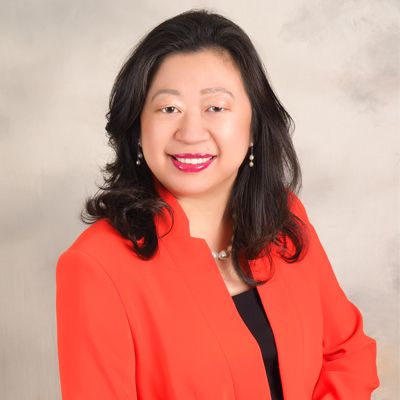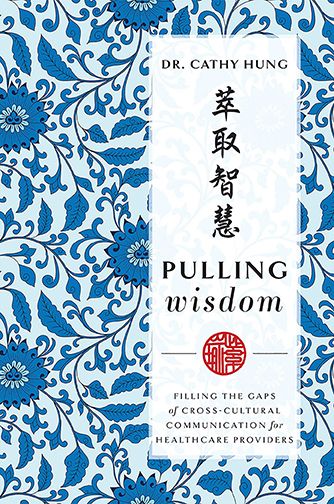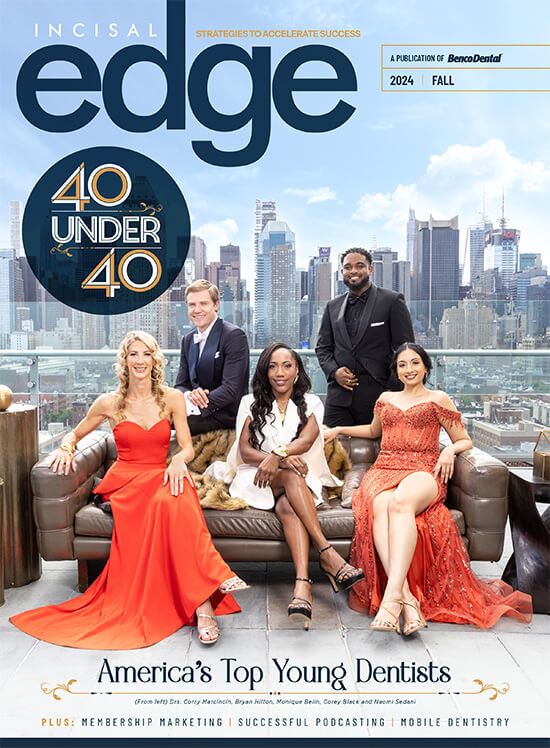Oral surgeon, life coach and author Dr. Cathy Hung works to help women and minorities achieve their professional-dentistry dreams—an act of grace she never had access to when she was starting out.
DR. CATHY HUNG faced extraordinary challenges at the outset of her career. The aspiring surgeon had arrived alone in the U.S. from Taiwan via Singapore at age 18, first earning a bachelor’s degree in psychology at Berkeley, then a dental degree from Columbia. She completed the oral and maxillofacial surgery residency program at Lincoln Medical and Mental Health Center in the Bronx, New York.
Now 48, married with two teenage sons and firmly established as both a board-certified oral and maxillofacial surgeon and professional life coach, Dr. Hung has poured life and career lessons—her own and those of others—into her second book, Behind Her Scalpel: Practical Guide and Stories by Women Oral and Maxillofacial Surgeons, to be published this autumn. She runs Prospect Oral Surgery Center, a vibrant clinic in Monroe Township, New Jersey, but in her early career, there were “no social media, no resources,” she says. “I was in a dark space. It meant a lot of self-exploration. There was no mentorship, no one I felt I could really confide in and get good advice from… In retrospect, a lot of the work I’m doing now is because I’m in a position to help—because I figured out a lot of the answers myself.”
In retrospect, a lot of the work I’m doing now is because I’m in a position to help— because I figured out a lot of the answers myself.”
Behind Her Scalpel is no dry clinical tome. “Although we [focus on] women, maxillofacial surgeons or dentists who want to be oral-maxillofacial surgeons, anybody can read it, because the bulk of the book is a series of 25 stories,” she says. “You can pick it up, read the stories and be inspired. You can be a male student or resident and still benefit from the chapters that talk about mentorship, resident and fellowship application and leadership in general.”

Dr. Cathy Hung has poured life and career lessons—her own and those of others—into her second book, Behind Her Scalpel: Practical Guide and Stories by Women Oral and Maxillofacial Surgeons, to be published this autumn.
Dr. Hung was able to connect to her contributors through all the channels that didn’t exist when she was starting out. Among them: Dr. Victoria Manon, an OMFS resident at the University of Texas, who designed the striking image for the cover of the book, and Dr. Maria Maranga, second vice president of the ADA and recipient of the Lucy Hobbs Project’s Mentorship Award in 2014, who penned the foreword. “This is the power of social media,” Dr. Hung says. “I reached out and explained what I was doing, as I had just completed the Diversity in Leadership program for the ADA.”
The stories between the covers incorporate scientific research to a certain degree, “but it was not my intention to pack [the book] with facts,” she says. “I want to speak to your heart, because most of the people I talked to wanted to give up at some point.” Among the contributors who especially help round out the book, Dr. Hung cites Dr. Rania Habib, a pediatric craniofacial surgeon at the University of Pennsylvania, who contributed two chapters on residency and fellowship applications; Dr. Leslie Halpern of the University of Utah, who wrote about mentorship; and Dr. Justine Moe, OMFS program director at the University of Michigan, whom Dr. Hung interviewed for one chapter.
Her ultimate goals: “Increasing the number [of female surgeons] is first. Then we need to change the entire culture of residency training. When I set up my practice from scratch, it was more difficult to get referrals. I had general dentists look me up and down and laugh: ‘What are you doing here?’ There’s still a lot of that. That will take years to change. That’s harder.”

______________________________________________________________________________________
BY: Kristie Ceruti
PHOTOGRAPH COURTESY OF DR. CATHY HUNG




